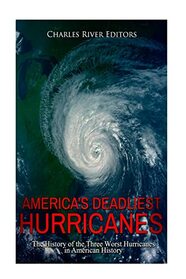Perhaps because I read this during Hurricane Season, the stories were compelling and fascinating. The author stitched different stories together to make an exciting look at hurricanes from the victim's view.
Having lived near Galveston for almost 50 years, I was familiar with the Galveston Storm. However, this author told the story so compellingly that the tale enthralled me. The ground was so saturated that they couldn't bury the bodies (about 12,000), so they first sent them out to sea (but they came back) and finally burned the bodies.
So many people were against building a seawall on Galveston Island until this happened. After the storm surge, water was waist-deep across the island. Because Galveston was such a prominent port (even then), they had to do something to protect people and property. The city jacked up all that could be lifted and pumped 14 million cubic yards of sand underneath (to raise the level of the island by ten feet). The photos shown are incredible.
Although we all watched Katrina on television in 2005, we know less about the 1928 Lake Okeechobee hurricane. Showing the pathway with red dots helped readers understand the depth of the problem Floridians faced with this hurricane. There are lots of photos and drawings for information. This is a fantastic eBook about destructive hurricanes that people will enjoy.
Having lived near Galveston for almost 50 years, I was familiar with the Galveston Storm. However, this author told the story so compellingly that the tale enthralled me. The ground was so saturated that they couldn't bury the bodies (about 12,000), so they first sent them out to sea (but they came back) and finally burned the bodies.
So many people were against building a seawall on Galveston Island until this happened. After the storm surge, water was waist-deep across the island. Because Galveston was such a prominent port (even then), they had to do something to protect people and property. The city jacked up all that could be lifted and pumped 14 million cubic yards of sand underneath (to raise the level of the island by ten feet). The photos shown are incredible.
Although we all watched Katrina on television in 2005, we know less about the 1928 Lake Okeechobee hurricane. Showing the pathway with red dots helped readers understand the depth of the problem Floridians faced with this hurricane. There are lots of photos and drawings for information. This is a fantastic eBook about destructive hurricanes that people will enjoy.




